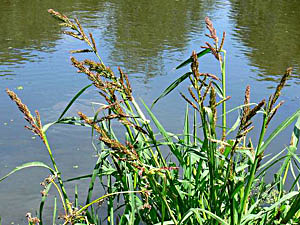
medicinal herbs
Barnyard Millet
Echinochloa crus-galli

Herb: Barnyard Millet
Latin name: Echinochloa crus-galli
Synonyms: Panicum crus-galli
Family: Gramineae (Grass Family)
Medicinal use of Barnyard Millet:
Reported to be preventative and tonic, barnyard grass is a folk remedy for treating carbuncles, haemorrhages, sores, spleen trouble, cancer and wounds. The shoots and/or the roots are applied as a styptic to wounds. The plant is a tonic, acting on the spleen.Description of the plant:

Plant:
Annual
Height:
120 cm(4 feet)

Flowering:
July toSeptember
Habitat of the herb:
Ditches roadsides and waste places in S. Europe. Wet places and rich soils in India.Edible parts of Barnyard Millet:
Seed - cooked. Used as a millet, it can be cooked whole or be ground into a flour before use. It has a good flavour and can be used in porridges, macaroni, dumplings etc. The seed is rather small, though fairly easy to harvest. It has a somewhat bitter flavour. Young shoots, stem tips and the heart of the culm - raw or cooked. A nutritional analysis is available. The roasted seed is a coffee substitute.Other uses of the herb:
The plant is sometimes used, especially in Egypt, for the reclamation of saline and alkaline areas.Propagation of Barnyard Millet:
Seed - sow early spring in a greenhouse and only just cover the seed. When they are large enough to handle, prick the seedlings out into individual pots and plant them out into their permanent positions in early summer. A sowing in situ in late spring might also succeed but is unlikely to ripen a crop of seed if the summer is cool and wet.Cultivation of the herb:
Ditches roadsides and waste places in S. Europe. Wet places and rich soils in India.Known hazards of Echinochloa crus-galli:
This grass has been reported to accumulate levels of nitrate in its tissues high enough to be toxic to farm animals. This problem is most likely to occur when plants are fed with inorganic fertilizers.Plant information taken from the Plants For A Future.
